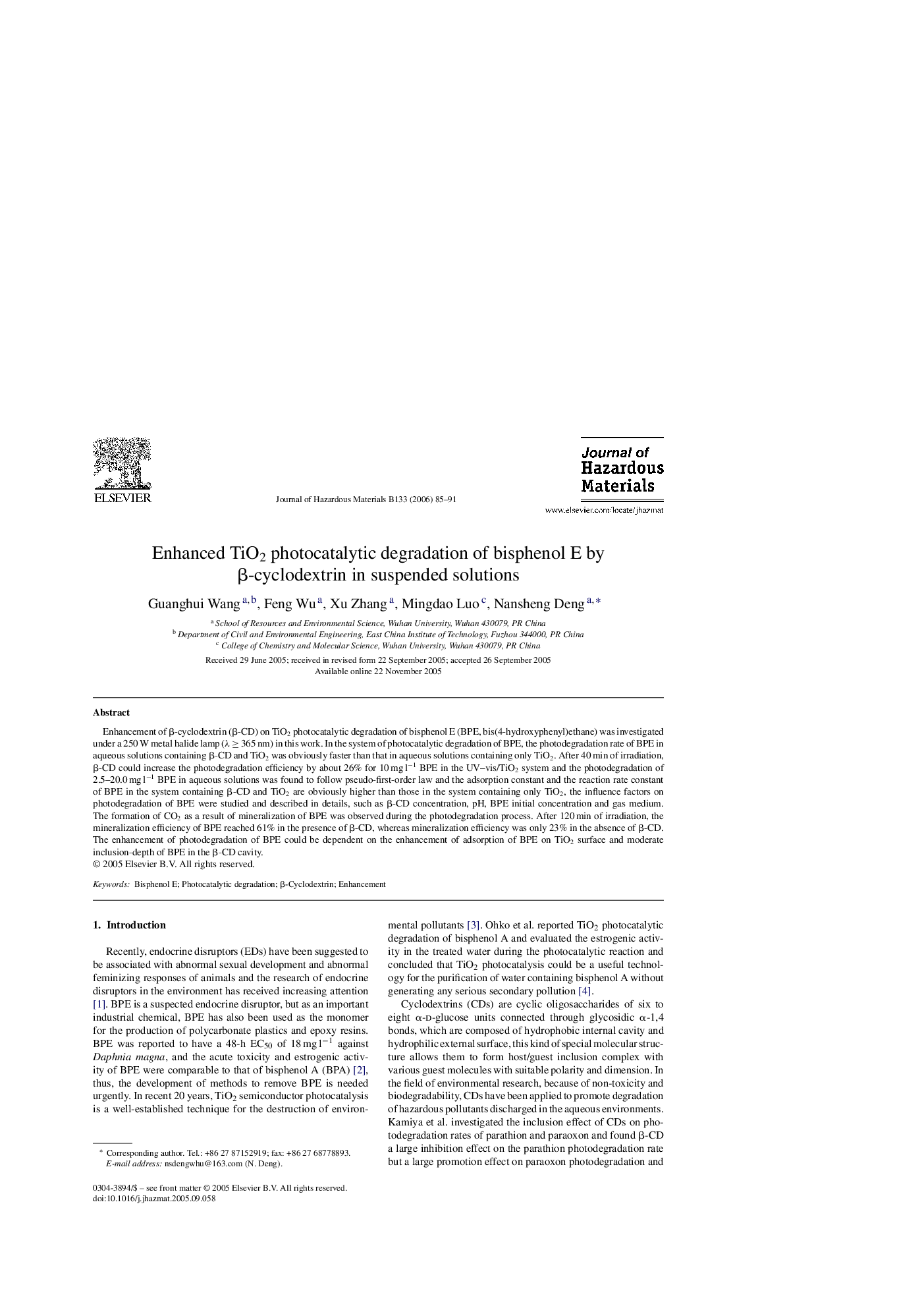| Article ID | Journal | Published Year | Pages | File Type |
|---|---|---|---|---|
| 585179 | Journal of Hazardous Materials | 2006 | 7 Pages |
Abstract
Enhancement of β-cyclodextrin (β-CD) on TiO2 photocatalytic degradation of bisphenol E (BPE, bis(4-hydroxyphenyl)ethane) was investigated under a 250 W metal halide lamp (λ â¥Â 365 nm) in this work. In the system of photocatalytic degradation of BPE, the photodegradation rate of BPE in aqueous solutions containing β-CD and TiO2 was obviously faster than that in aqueous solutions containing only TiO2. After 40 min of irradiation, β-CD could increase the photodegradation efficiency by about 26% for 10 mg lâ1 BPE in the UV-vis/TiO2 system and the photodegradation of 2.5-20.0 mg lâ1 BPE in aqueous solutions was found to follow pseudo-first-order law and the adsorption constant and the reaction rate constant of BPE in the system containing β-CD and TiO2 are obviously higher than those in the system containing only TiO2, the influence factors on photodegradation of BPE were studied and described in details, such as β-CD concentration, pH, BPE initial concentration and gas medium. The formation of CO2 as a result of mineralization of BPE was observed during the photodegradation process. After 120 min of irradiation, the mineralization efficiency of BPE reached 61% in the presence of β-CD, whereas mineralization efficiency was only 23% in the absence of β-CD. The enhancement of photodegradation of BPE could be dependent on the enhancement of adsorption of BPE on TiO2 surface and moderate inclusion-depth of BPE in the β-CD cavity.
Related Topics
Physical Sciences and Engineering
Chemical Engineering
Chemical Health and Safety
Authors
Guanghui Wang, Feng Wu, Xu Zhang, Mingdao Luo, Nansheng Deng,
